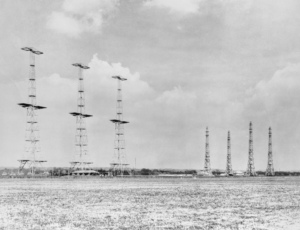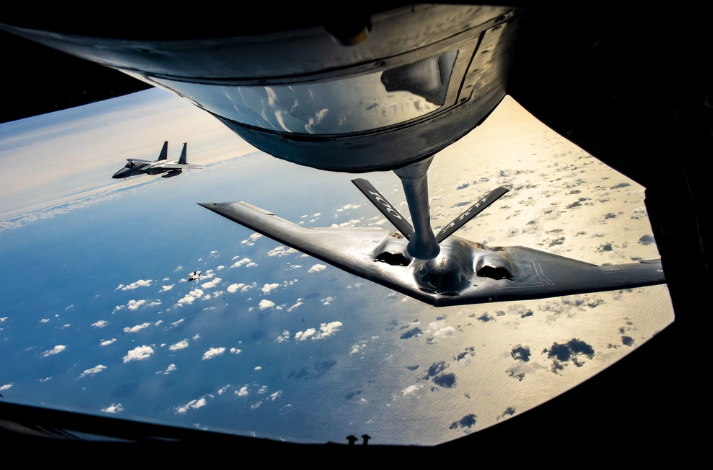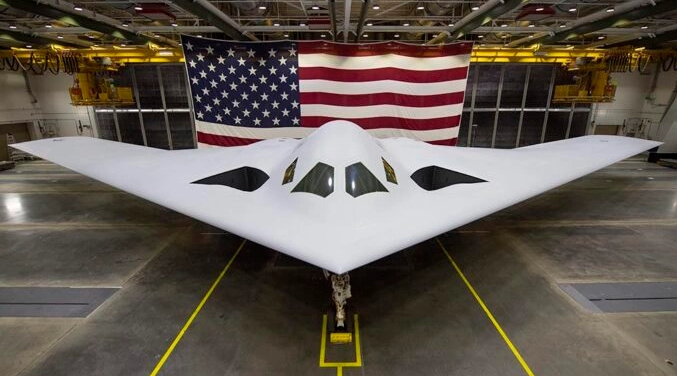Introduction
Secretary of Defense Harold Brown coined the term “stealth technology” at a Pentagon news conference on August 22, 1980.
“It is not too soon to say that by making existing air defense systems essentially ineffective, this alters the military balance significantly,” Brown said.i
Designed to avoid detection by utilizing a variety of technologies, stealth aircraft entered the U.S. Air Force inventory with the introduction of the F-117 Nighthawk in 1981. Later, more advanced stealth aircraft joined the fleet, such as the B-2 Spirit, F-22 Raptor, F-35 Lightning II and soon, the B-21 Raider.
Stealth technology’s significance throughout history continues to dominate the aerial battlefield—with no major countermeasures emerging to negate its effectiveness. History of this technology not only has a complex story, but it also portrays the ability of the U.S. Air Force to consistently evaluate, adjust and respond to enemy threat.
Origins
The emergence of stealth technology stemmed out of the desire to counter RADAR systems during World War II. The use of RADAR (RAdio Detection And Ranging) in the 1940s gave Allied and Axis Forces the ability to detect approaching enemy aircraft and prepare for their defenses in advance. This early warning technology transmitted multiple, small electromagnetic pulses in a straight line from a central location. If these waves encountered an object, they scattered in multiple directions with a small portion returning to the transmission point.
RADAR proved its worth. For example, the British successfully developed the first large-scale, national defense system, known as the Chain Home, by constructing towers to detect approaching enemy aircraft. This allowed them to effectively prepare for possible invasions. Aware of this new and useful technological advancement, the U.S. military realized the benefits of developing aircraft to counter RADAR.
Development During the Cold War
During the Cold War, the U.S. military and its Allies dedicated resources to counter radar technology. Rising tensions with the USSR created a need for stealth technology that would enable the U.S. to covertly gather information or attack in secret. Aerospace defense companies explored this technology to meet a military need, and they called it “low observable technology,” which utilizes radar cross-section reductions to allow for stealth to work successfully. In an effort to aid the military with their stealth defense, Lockheed Martin developed the F-117 Nighthawk.
In 1988, the U.S. Air Force introduced to the public the world’s first true, stealth aircraft, the F-117 Nighthawk. Designed and produced by the Skunk Works division of Lockheed, the Nighthawk’s unique, angular design gave it the capability of traversing through radar with minimal detection. Unfortunately, due to its groundbreaking design, the aircraft also had several limitations—it could carry only two bombs in internal bays and could only fly night operations. The 649 Combat Logistics Support Squadron (CLSS) at Hill Air Force Base deployed worldwide to perform heavy maintenance and modifications on the F-117 when it sustained battle or crash damage. As of 2008, some three decades after entering service, the U.S. Air Force retired the F-117, though several remain in use for various testing and training missions.
Lockheed was not the only developer tasked with developing a stealth aircraft. The Department of Defense had also determined the need for a long-range, strategic bomber capable of penetrating enemy radar undetected and destroying key targets. Fortunately, aerospace and defense company Northrop Grumman had been testing a “flying wing” concept since the end of the Second World War, which included several natural stealth characteristics. This would eventually lead to the production of the B-2 Spirit.
The B-2 Spirit, produced from 1987 to 2000, became the second U.S. Air Force aircraft designed with advanced stealth technology. Rather than angular, hard edges, the B-2 employed a blended wing which increased aerodynamics and range. This meant the B-2 had no central fuselage or vertical surface, instead using computer-controlled flight surfaces to maintain stability. Combined with its radar-absorbent coating and low-observation technologies, the B-2 Spirit could evade detection by enemy radar. Since its introduction in 1997, enemy missile has never struck the B-2, something the F-117 fell prey to in 1999, resulting in the only successful downing of a stealth aircraft by enemy fire.
Into the Future
Recent fighter jets have also adopted stealth technology, which include the F-22 Raptor and F-35 Lightning II, both produced by Lockheed Martin. These single-seat, supersonic, all-weather stealth aircraft have become a critical component of the U.S. Air Force’s tactical airpower. The combination of aerodynamic performance, attack and bombing capabilities and high technological systems put these fighters at the top in terms of stealth performance.
A new stealth bomber will soon appear in the U.S. Air Force’s inventory. In the late 2010s, Northrop Grumman introduced the development of the B-21 Raider long-range, stealth bomber. Incorporating the latest in low-observable technologies, radar-absorbent materials and over three decades of innovation, the Raider is next on the list of advanced stealth bombers. The U.S. Air Force currently plans on retiring the B-2 no later than 2032.
Hill Air Force Base (AFB)
From weapon systems maintenance to combat operations, Hill AFB has a diverse stealth mission history.
Stealth missions for Hill began with maintenance. In the 1990s, the Ogden Air Logistics Center’s 649th Combat Logistics Support Squadron (CLSS) assumed the responsibility of providing expeditionary maintenance for the F-117. This meant they would deploy military teams to perform heavy maintenance and aircraft modifications on Nighthawks worldwide, to include combat zones. This unique support is crucial when executing overseas operations. The 649th CLSS supported this mission until the F-117 retired from service in 2008.
Hill’s stealth maintenance mission only grew over time. At the turn of the century, men and women of this installation started performing depot maintenance on the F-22 Raptor, now performing all heavy airframe maintenance for this weapon system. Coinciding with the centralization of the F-22 depot workload on Hill, the installation became the prime depot for F-35A maintenance, the U.S. Air Force’s most advanced fighter aircraft.
Depot maintenance, however, is only one half of Hill’s significant stealth mission connection. Combat operations support has and still is an important role of the base. Starting in 2016, the 388th Fighter Wing (Active Duty) and 419th Fighter Wing, both stationed at Hill AFB, became the first combat units to fly the F-35A Lightning II. Since then, both units have completed multiple deployments abroad with the U.S. Air Force’s most advanced fighter aircraft. Hill AFB’s presence in maintaining and operating current stealth technology remains crucial for U.S. Air Force operations, both nationally and worldwide.
Hill Aerospace Museum
The invention of stealth technology has added to the important mission of Hill AFB as a central part of maintenance and repair for the war fighter. In 2020, the Hill Aerospace Museum acquired an F-117 Nighthawk for its collection. The F-117 is currently undergoing the restoration process, which guests can watch in real-time in the museum’s second gallery. The museum also acquired an F-22, which is estimated to be on display sometime in 2024. To learn more about the history of stealth, visit the Hill Aerospace Museum. Admission is always free.
To check out more information on the Hill Aerospace Museum, please see our website at www.aerospaceutah.org, and follow us on our social media (Facebook, Instagram (@aerospaceutah), TikTok).
ihttps://www.airandspaceforces.com/article/history-of-stealth-from-out-of-the-shadows/



